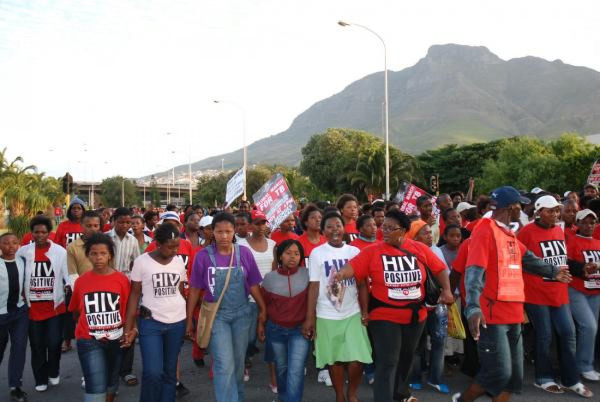World AIDS Day 2012: In South Africa, From Crisis To Catastrophe

More than 30 years after the emergence of HIV/AIDS and almost 20 years after the end of apartheid, South Africa holds the dubious distinction of having the most people afflicted with the deadly virus.
The numbers are staggering and frightening.
According to AVERT, an international HIV & AIDS charity, at least 5.6 million South Africans – more than 11 percent of the population – are currently living with HIV or AIDS. In 2009 alone, 310,000 South Africans died from the disease.
Nearly 18 percent of people between the ages of 15 and 49 have the virus; in the provinces of Mpumulanga and KwaZulu-Natal affliction rates approach 16 percent.
Nearly one-third of women aged 25-29, and more than one-fourth of men aged 30-34 are living with HIV.
An estimated 20 percent of HIV cases arise from prostitution, while 10 percent of new infections occur from homosexual activity.
Even more tragic, at least 330,000 children under the age of 15 are living with HIV, a figure that has nearly doubled since the beginning of the century.
The government – which once infamously claimed HIV did not lead to AIDS – failed to create a counseling and testing program until 2010, by which time hundreds of thousands had already perished.
[Thabo Mbeki, president of South Africa from 1999 to 2008, and his health minister, Manto Tshabalala-Msimang, once suggested beetroot and garlic could fight HIV infection.]
As the virus is overwhelmingly transmitted through heterosexual activity, South African babies born with HIV enter the world into a family where several other relatives are already stricken, damaging their income prospects and life expectancies.
This nightmarish scenario has produced 1.9 million AIDS orphans in South Africa, placing terrible burdens on grandparents and other relatives.
In 2009, according to the National Antenatal Survey, some 30 percent of pregnant women in South were found to be HIV-positive.
“The history of HIV and AIDS in South Africa is perhaps the most controversial of any country,” AVERT wrote.
“It is littered with examples of government inaction and harmful interference, pseudoscience and conflict between politicians, HIV/AIDS organizations and scientists. The after-effects of some two decades of counter-productive policies are still being felt today in a country that has the world’s largest HIV epidemic.”
As in the United States, the initial reports in South Africa suggested the disease was confined to white homosexual men, leading the vast black majority to ignore the risks and some to conclude that HIV was a white and alien contrivance. By 1991, HIV had laid waste to a wide swath of black heterosexual South Africans.
Still, there is actually some good news on these fronts. For example, since 2001, the infant mortality rate has dropped from 56.9 deaths per 1,000 infants to 37.9 in 2011 (still quite high by global standards).
One particularly troubling aspect of HIV transmission in South Africa relates to the prevalence of domestic violence. The country suffers from the highest rates of sexual abuse and rape in the world, further exacerbating HIV infection rates.
According to a survey, at least 40 percent of South African men have abused their partners, while 25 percent have committed rape at least once in their lifetimes.
To combat the scourge, the Pretoria government has enacted programs to offer anti-retroviral drugs, provide free testing and counseling, encourage condom usage -- which more than doubled between 2002 and 2008 -- and raise awareness of the disease through education and mass media broadcasts.
Moreover, the government said last month that 80 percent of South Africans who need treatment now have access to anti-retroviral drugs.
But such treatments will carry a huge price tag.
The country’s Health Systems Trust estimated that South Africa will require up to $5.3 billion extra every year to maintain its HIV and AIDS therapies.
Since Jacob Zuma became president in 2009, the government has at last taken an aggressive stance against the virus, allocating huge funds toward state-supported treatment, placing special focus on pregnant women and infants.
"Government is prioritizing the fight against the abuse of women and children through law enforcement as well as education and awareness," Zuma said.
"We must also enhance our socioeconomic interventions to deal with poverty, unemployment, food insecurity and inequality. ... These either contribute to the spread of HIV or worsen the impact of the epidemic."
© Copyright IBTimes 2024. All rights reserved.





















